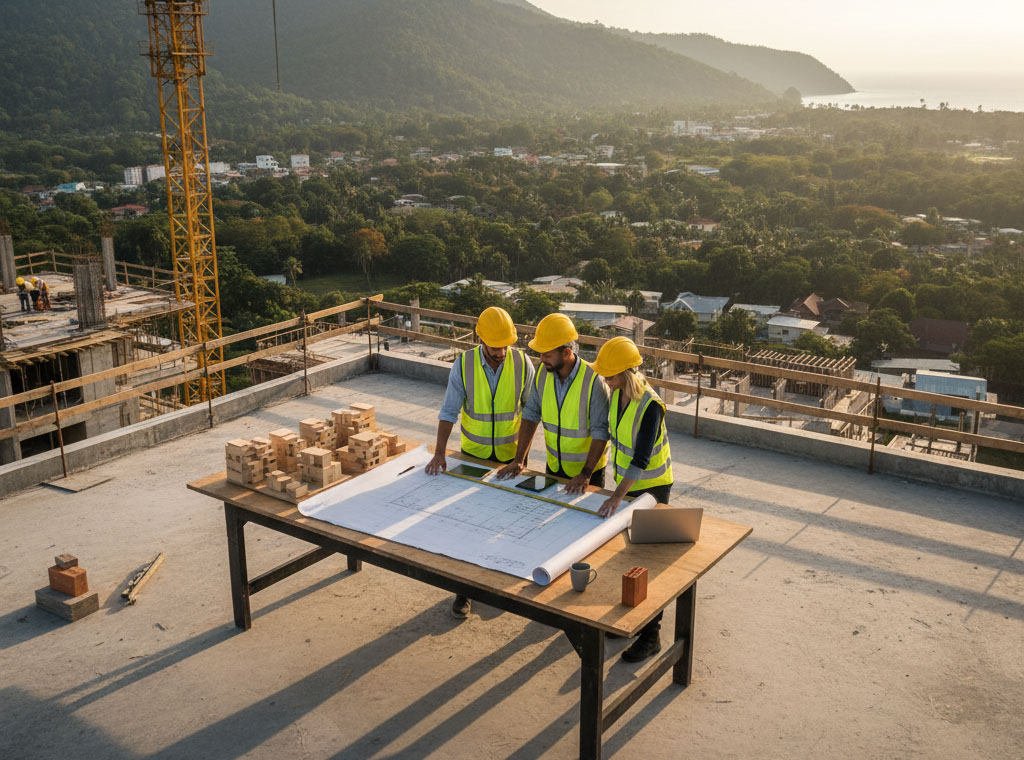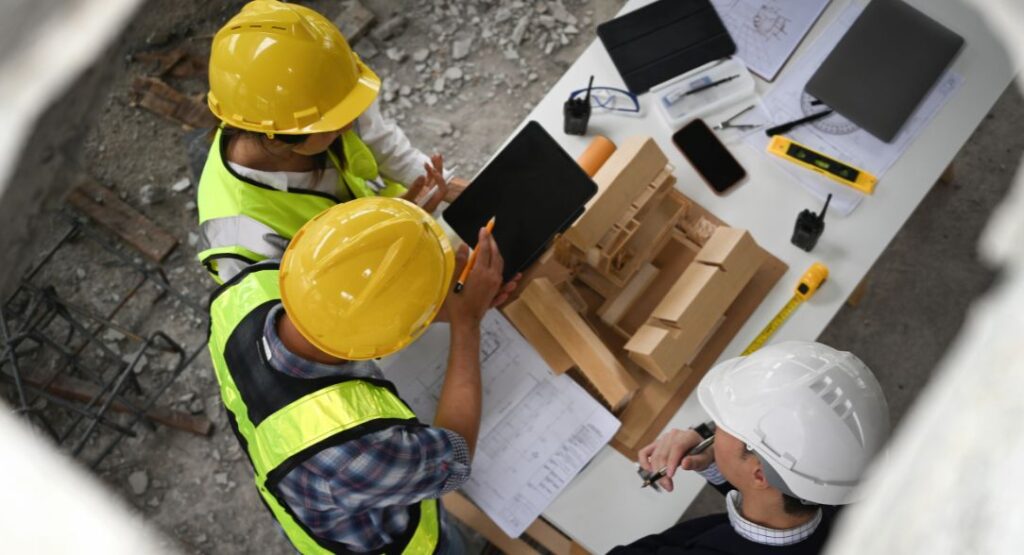Project Planning and Management in Costa Rica: Keys to Success

In Costa Rica’s vibrant and dynamic construction market, project planning and management are not just processes—they are the pillars that support success. From a tourism development in Guanacaste to a residential complex in the Central Valley or a logistics infrastructure in Limón, the complexity of each project demands a clear roadmap and expert direction. At A&A Building Co., we understand the specific challenges of the Costa Rican environment and how impeccable management is the difference between a successful project and one fraught with unexpected challenges. The Critical Importance of Planning in the Tico Context Costa Rica presents a unique landscape for construction, with its diverse geography, strict environmental regulations (SETENA, municipalities), and a skilled workforce that requires precise coordination. Strategic planning here must take into account: Local and Environmental Regulations: Deep knowledge of construction laws, municipal permits, and environmental impact requirements (SETENA) is crucial to avoid delays and penalties. Materials and Equipment Logistics: The import of certain materials or the transport of heavy equipment across Costa Rica’s topography demands detailed logistics planning. Climate Conditions: The rainy season and weather events can significantly impact schedules, making foresight and contingency plans indispensable. Local Talent Management: Optimizing the use of local labor and the relationship with specialized regional subcontractors. Rigorous planning allows us to anticipate these factors, develop solid strategies, and establish realistic schedules and budgets, which are vital for any investment in the country. Effective Field Management: Overcoming Tico Challenges Once the plan is underway, effective management ensures the project stays aligned with its goals, adapting to the day-to-day realities in Costa Rica. Our project managers focus on: Multi-Stakeholder Coordination: Managing communication and collaboration between investors, local authorities, suppliers, and on-site work teams, who often have different expectations and cultures. Local Budget Control: Continuously monitoring costs, considering price fluctuations of imported materials, local wages, and other market-specific expenses. Specific Risk Management: Implementing contingency plans for the tropical climate, potential transportation strikes, or regulatory changes, mitigating their impact on the schedule and budget. Quality and Sustainability: Ensuring that quality standards not only comply with international regulations but also integrate sustainable construction practices, which are increasingly valued in Costa Rica. Our experience in the Costa Rican market allows us to guide every project with the agility and knowledge necessary to anticipate and solve challenges, delivering results that not only meet but exceed expectations. Successful construction in Costa Rica is about more than just building—it’s about harmonizing complex factors within a unique environment. Our dedicated approach to planning and management ensures that your vision is realized efficiently, safely, and sustainably.
Collaborative and Agile Planning: The Key to Successful Construction Projects

Introduction In the competitive world of custom home building, like the projects developed by AA Building Co, the key to success lies in effective planning and continuous collaboration throughout every stage of the project. 1. Why is Planning so Important? Studies show that strong planning reduces risks and significantly increases project success rates. In construction, projects with well-defined planning have an 82% chance of meeting their objectives, compared to just 66% for those with limited planning (PMI.org). Investing time in defining scope, resources, and schedules is essential for efficient execution. 2. A Collaborative Approach: Beyond Rigid Structures Collaboration means more than just ticking boxes. It ensures that all stakeholders—engineers, architects, builders, and designers—are involved in decision-making from the very beginning. This approach fosters: 3. Agile in Construction? Yes—and It Works Though Agile originated in software development, its principles of continuous feedback, adaptability, and incremental progress translate effectively to construction projects. Breaking projects into manageable phases and reviewing progress frequently allows for real-time adjustments and higher-quality results. 4. Practical Steps Toward Effective Planning According to Atlassian, these six steps are essential to writing an effective project plan (Atlassian.com): 5. How AA Building Co Elevates the Process Conclusion Collaborative and agile planning doesn’t just reduce delays and mistakes—it elevates the overall quality of the final build. At AA Building Co, this personalized, flexible, and detail-oriented approach is what transforms a vision into a unique, long-lasting home.
From Vision to Reality: How AA Building Co. Masters Project Planning and Management

At AA Building Co., we don’t just build homes — we craft experiences. Our approach to project planning and management ensures that every custom home in Costa Rica is delivered with precision, transparency, and excellence. Whether you’re dreaming of a coastal retreat or a mountain sanctuary, our process transforms your vision into a reality that exceeds expectations. What Sets Our Planning Apart? We believe that successful construction begins long before the first brick is laid. Our planning process is rooted in: Why It Matters for Custom Homes Building a unique home requires more than just materials — it demands foresight, coordination, and trust. Our planning process ensures: We understand that your home is a reflection of your identity. That’s why our project management approach is designed to be as personalized and meticulous as the homes we build. Local Expertise, Global Standards Operating in Costa Rica means navigating unique terrain, climate, and regulations. Our team combines local knowledge with international best practices to ensure every project is compliant, sustainable, and built to last. We handle permits, inspections, and logistics so you can focus on the excitement of building your dream home.
The Key to Success: Planning and Management Strategies for Large-Scale Construction Projects

Introduction The success of a large-scale construction project doesn’t depend solely on solid on-site execution. The true key lies in strategic planning and effective management at every stage of the process. From preliminary studies to final delivery, large projects demand vision, experience, and flawless coordination. In this article, we explore best practices in planning and management of large-scale projects, including digital tools, methodologies, and practical tips to avoid cost overruns, delays, and coordination issues. 1. Initial Diagnosis: Understanding the Terrain Before Starting Every major project begins with a deep understanding of the terrain—both physical and financial. This includes: A strong preliminary phase can reduce errors by over 30%, according to reports from the Project Management Institute (PMI). 2. Establishing a Master Plan A large-scale project requires a comprehensive Master Plan, which defines: Tools such as Primavera P6, Microsoft Project, and BIM 5D are essential for visualizing the entire scope of the project. 3. Integration of Multidisciplinary Teams Large projects require collaboration between: Effective communication among these stakeholders is achieved through collaborative platforms like Procore, Buildertrend, or Autodesk Construction Cloud. 4. Real-Time Cost and Budget Management One of the main causes of failure in megaprojects is poor financial control. Solutions like BIM 5D and construction-specific ERP systems enable: 5. Schedule Management: The Art of Meeting Deadlines Using agile methodologies adapted to the AEC environment (Architecture, Engineering & Construction), such as SCRUM or the Last Planner System, helps keep milestones on track without losing flexibility in the face of unexpected changes. 6. Quality, Safety, and Environmental Standards (QSHE) Large projects must adhere to strict standards in three areas: 7. Technology as an Ally: Drones, IoT, and Digital Twins New technologies are transforming the way we manage large-scale construction: Conclusion Effective planning and management of large-scale projects is not optional—it’s the foundation of success. With a clear strategy, aligned teams, and smart use of technology, any challenge can become an opportunity to build with excellence. Ready to take your project to the next level? At A&A Building Co., we specialize in turning ambitious ideas into solid structures. Contact us for a personalized consultation on planning and managing your next large-scale project. large-scale construction planning, construction project management, project management in construction
Planning and Project Management in Construction: The Key to Successful Buildings

In the construction industry, effective project planning and management are critical to ensuring that developments are completed on time, within budget, and in accordance with the required quality standards. Construction projects are inherently complex, involving numerous stakeholders, a wide array of materials and equipment, and interdependent processes that must be strategically coordinated. What Is Construction Planning? Construction planning refers to the systematic definition and organization of all phases of a project—from land acquisition and preliminary assessments to the final handover. This process entails identifying and allocating human, material, and financial resources, as well as developing a comprehensive schedule to mitigate delays and avoid cost overruns. Core Components of Construction Planning: Construction Project Management Project management in construction focuses on the structured execution of the project plan. It encompasses the coordination of multidisciplinary teams, subcontractors, and suppliers while continuously monitoring performance in terms of cost, schedule, quality, and compliance. Key Responsibilities of a Construction Project Manager: Advantages of Effective Construction Planning and Management Recommended Tools and Technologies Adopting industry-standard project management software—such as Microsoft Project, Oracle Primavera P6, or Building Information Modeling (BIM)—is essential for enhancing collaboration, real-time tracking, and overall project visibility. Conclusion In today’s construction environment, meticulous planning and disciplined project management are not optional—they are imperative for achieving success. A well-executed project from initial conception to final delivery leads to safe, resilient, and cost-effective developments that meet stakeholder goals and generate long-term value.